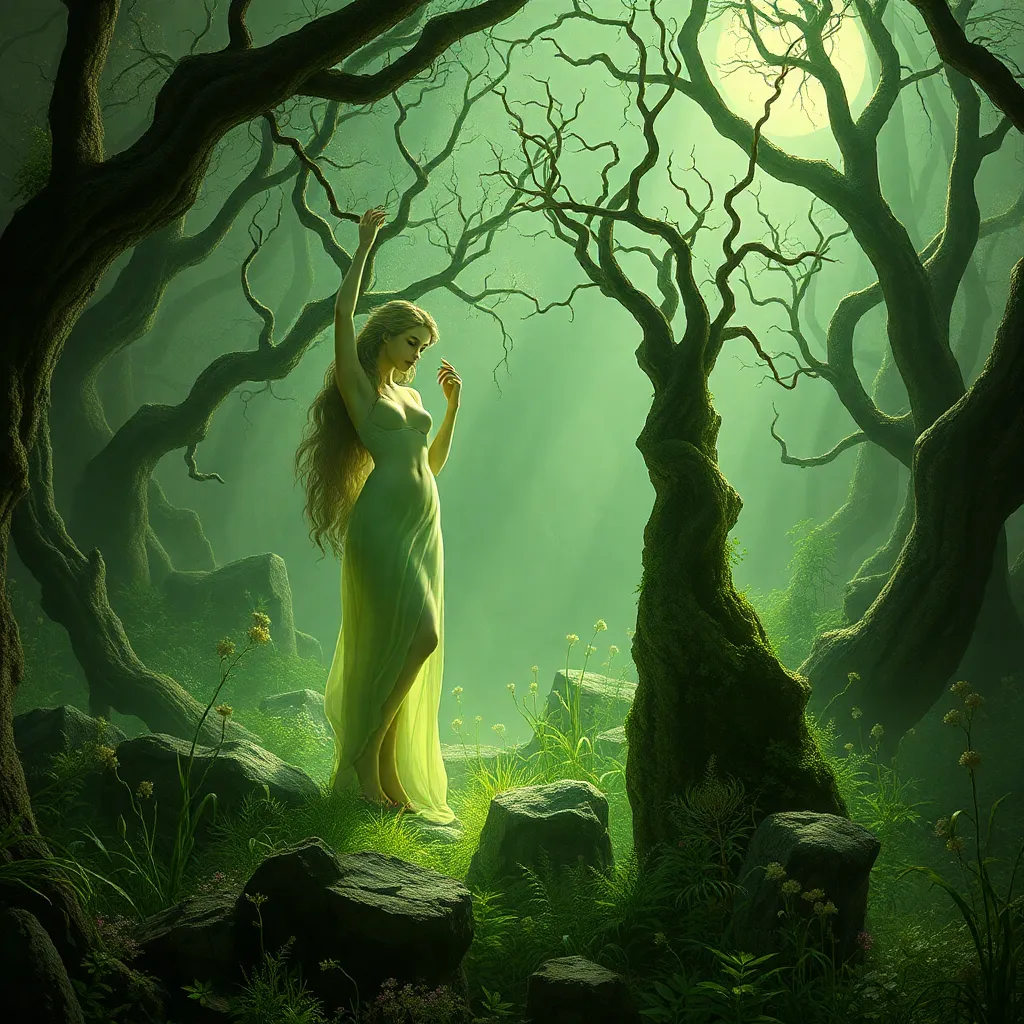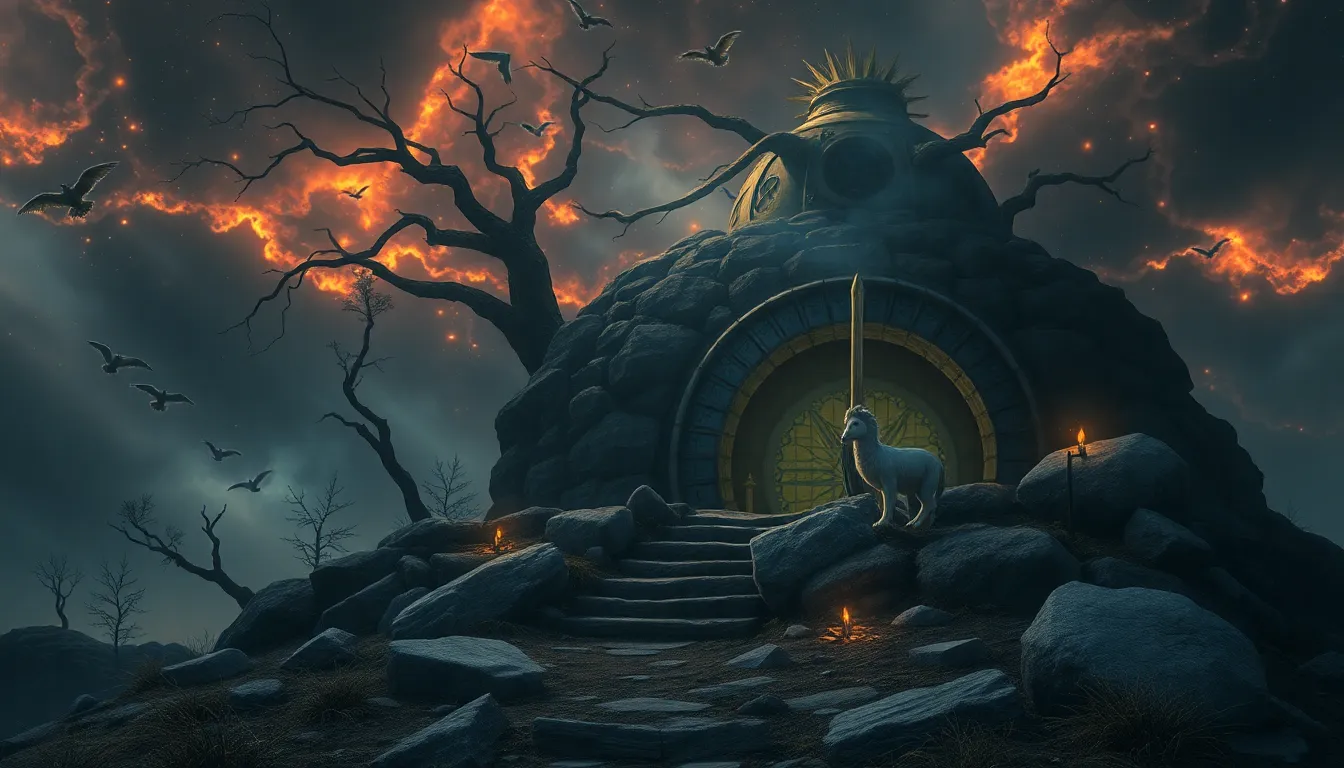The Dryads of the Underworld: Exploring the Mythological Connection to the Afterlife
I. Introduction
In the rich tapestry of mythology, Dryads hold a unique and enchanting place. Defined as tree nymphs or spirits, they are often depicted as beautiful maidens associated with oak trees, although they can also be linked to other types of trees. The significance of Dryads varies across different cultures, often embodying the life force of trees and the natural world.
This article aims to explore the captivating connection between Dryads and the afterlife, delving into their origins, characteristics, and mythological narratives that link them to the Underworld. By examining these elements, we can gain a deeper understanding of how Dryads symbolize the cyclical nature of life and death.
II. Understanding Dryads: Origins and Characteristics
A. Historical roots of Dryad mythology in ancient Greece
Dryads find their historical roots in ancient Greek mythology, where they were revered as sacred spirits of the woods. The term “Dryad” itself comes from the Greek word “drys,” meaning oak. However, their mythology encompasses a wide range of tree spirits, with each type of tree having its own specific Dryad.
B. Physical and symbolic traits of Dryads
Typically, Dryads are portrayed as ethereal beings, embodying the beauty and grace of nature. They are often described as having long, flowing hair adorned with leaves and flowers, and their skin is sometimes said to have the texture of bark. Symbolically, Dryads represent the vitality of the forest and the interconnectedness of life.
C. The relationship between Dryads and trees
Dryads are intrinsically linked to the trees they inhabit. Each Dryad is believed to be born from, and to share a life force with, a specific tree. If the tree dies, the Dryad perishes as well. This connection highlights the symbiotic relationship between nature and its spirits, emphasizing themes of growth, decay, and renewal.
III. The Underworld in Mythology
A. Overview of the Underworld across different cultures
The concept of the Underworld is prevalent in numerous mythologies worldwide. It is often depicted as a realm where souls go after death, a place of judgment, and sometimes, a realm of rebirth. Cultures such as the Greeks, Egyptians, and Norse each have their unique interpretations of the afterlife.
B. Key figures associated with the Underworld (e.g., Hades, Persephone)
In Greek mythology, Hades is the god of the Underworld, ruling over the deceased alongside his wife, Persephone, who was once a mortal. Persephone’s annual descent into the Underworld symbolizes the seasonal cycle of death and rebirth, echoing themes found in Dryad lore.
C. Common themes and beliefs about the afterlife
- The journey of the soul: Many cultures believe in a journey through the Underworld where souls are judged.
- Rebirth and resurrection: Concepts of life after death often include the possibility of rebirth.
- Nature’s role: Nature frequently plays a pivotal role in afterlife beliefs, reflecting the cyclical nature of existence.
IV. Dryads in the Underworld: Mythological Narratives
A. Stories of Dryads descending to the Underworld
In various mythological narratives, Dryads are depicted as descending into the Underworld, either to seek lost souls or to fulfill duties associated with the afterlife. These stories often illustrate their role as mediators between the living and the dead.
B. The role of Dryads as guides or protectors of souls
Dryads, in their nurturing essence, are sometimes portrayed as guides for lost souls navigating the Underworld. Their connection to trees, symbols of life and growth, allows them to serve as protectors, helping souls find peace and understanding in the afterlife.
C. Interpretations of Dryads’ connection to death and rebirth
The relationship between Dryads and the Underworld can be seen as a reflection of the greater cyclicality of existence. Just as trees shed their leaves in autumn and bloom anew in spring, Dryads embody the themes of death and rebirth, illustrating the continuous cycle of life.
V. Symbolism of Dryads and the Afterlife
A. The cyclical nature of life, death, and rebirth in Dryad mythology
Dryads symbolize the perpetual cycle of life, death, and rebirth. Their existence is a reminder that death is not an end, but a transition to another state of being, much like the seasonal changes in nature.
B. The significance of trees as symbols of life and death
Trees serve as powerful symbols in many cultures, representing both life and death. As living entities, they provide sustenance and shelter, while their fallen leaves and decaying wood signify the inevitability of death. Dryads, as guardians of trees, embody this duality.
C. Dryads as representations of the human spirit and nature’s resilience
In many ways, Dryads represent the human spirit’s resilience and its connection to nature. They remind us of the importance of nurturing our environment and honoring the cycles of life that bind us all.
VI. Comparative Analysis: Dryads and Other Afterlife Figures
A. Similarities between Dryads and other mythological beings (e.g., nymphs, spirits)
Dryads share similarities with other mythological beings such as nymphs and nature spirits, often embodying aspects of beauty, life, and the natural world. Like Dryads, these beings often serve as protectors of their domains.
B. Cross-cultural comparisons of afterlife beliefs involving nature deities
Across cultures, nature deities often play a significant role in afterlife beliefs. For example, the Egyptian goddess Osiris, associated with the cycle of life and death, shares thematic similarities with the nurturing essence of Dryads.
C. Insights into human connections with nature and mortality
The examination of Dryads and their counterparts reveals deep insights into humanity’s relationship with nature and mortality. Our understanding of life and death is often intertwined with our respect for the natural world, reflecting a universal desire for connection and understanding.
VII. Modern Interpretations and Cultural Influences
A. The portrayal of Dryads in contemporary literature and media
In modern literature and media, Dryads continue to be portrayed as mystical beings, often embodying themes of environmentalism and the spiritual connection to nature. They appear in various fantasy genres, reinforcing their status as symbols of nature’s magic.
B. The resurgence of interest in mythology and nature spirituality
There has been a notable resurgence of interest in mythology and nature spirituality in recent years. Many individuals are seeking to reconnect with ancient beliefs that honor the earth and its cycles, reflecting a growing awareness of environmental issues.
C. How modern beliefs about the afterlife reflect ancient traditions
Modern beliefs surrounding the afterlife often echo ancient traditions, with an emphasis on the interconnectedness of all life. The stories of Dryads and their ties to the Underworld serve as poignant reminders of these enduring themes.
VIII. Conclusion
In conclusion, Dryads hold a significant place in mythology, particularly in their connection to the Underworld and the afterlife. Their narratives encapsulate the themes of life, death, and rebirth, reminding us of the resilience of nature and the human spirit.
The legacy of Dryads and their connections to the afterlife endures, inviting us to explore these ancient stories and their meanings in our modern world. As we delve into the mythology surrounding Dryads, we are encouraged to reflect on our own relationships with nature and the eternal cycle of existence.



